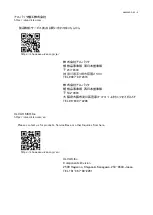
6
4.2 Operation of the Thermal Protector
1)
When the thermal protector operates, switch the power OFF, remove the power cord from the
outlet, and contact the manufacturer. Note that the pump will be very hot and should not be
touched.
2) The pump operates automatically when temperature drops. Shut-off the power supply, and
determine the cause of operation of the thermal protector.
3) Once the cause of the fault has been removed, wait until the motor cools and restart operation.
Automatic reset thermal protector : 120
±
5
℃
See Caution (6), P06
4.3 Starting in Cold Weather
Cold weather will increase the viscosity of bearing grease and harden diaphragms, resulting in the
pump being difficult to start. Follow the procedure below in such conditions.
1) Turn the switch ON/OFF 2~3 times with the inlet open to atmosphere until the pump starts. If the
pump still does not start, raise the ambient temperature to beyond 7°C.
2) With the inlet open to atmosphere, run the pump for a few minutes to warm it.
3) Commence normal operation once the pump has warmed.
5. Pump Performance
5.1 Pressure Achieved
The term “pressure achieved” as employed in the catalogue and in this manual is defined as “the
minimum pressure obtained by the pump without introduction of gas from the pump inlet (i.e. the
no-
load condition)”.
Note that the indicator values for pressure may differ between types of vacuum gauges.
The pressure achieved in practice is higher than that noted in the catalogue for the following reasons.
(1) The fact that the vacuum gauge is mounted a distance from the pump, the steam generated by
water droplets and rust etc on the inside walls of the pump and piping, and a variety of gases
present in the system result in increased pressure.
(2) Leaks into the vacuum system introduce other gases, resulting in increased pressure.
5.2 Evacuation Rate
The maximum rate of evacuation is reached when air is introduced, and decreases slightly as
pressure is reduced.
The resistance of the piping system increases with small bore piping which extends over long
distances, and this reduces the rate of evacuation.
The declared rate of evacuation for this pump is the maximum value achieved with dry air.
!
Caution









































